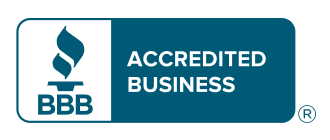Everyone knows that writing a good proposal is important for contractors. Proposals are a representation of your company and the type of work that you’ll perform. In order to be successful, your proposal must clearly define the work to be performed and how much you will charge to perform that work. For more on writing a successful project proposal, see the tips below.
Review the project documents
Most projects will include documents that represent the work that needs to be completed. Drawings are a visual representation of the scope of work. Specifications provide information on what materials are to be used and how the work is to be performed.
Before you begin writing your proposal, you need to understand the scope of work, both for the work you’ll perform as well as the entire project. Taking a big picture look at the project allows you to understand what role your work will play, as well as give you clues to the project’s schedule. Of course, you’ll need to take a detailed look at the work you will perform, understanding both the materials needed and how the work will be completed.
Review the project documents carefully, and if you have any questions or things you don’t understand, don’t be afraid to ask a question. It’s better to get clarification before you submit a proposal, then to find out after you’ve signed a contract and can’t correct your pricing.
Clearly define the scope of work
Not everyone looks at a job the same. To avoid possible confusion about the work you will perform, you need to clearly define the scope of the project that you’re bidding on. Provide as much detail as possible. A scope that just says “plumbing” isn’t as good as one that outlines what piping, fixtures, and equipment will be included.
Part of defining the scope of work specifying what will not be included in your proposal. Be sure that your exclusions are as clear as your inclusions, or what you will provide.
Use a proposal template
If the job doesn’t have a proposal form that you must use, use a proposal template. A proposal template is a form you create and use to complete all your job proposals. A template allows you to include all the terms and conditions that you want on all of your projects, and not have to remember them each time.
You’ll want to have proposal templates for a variety of project types. For example, you might have one for lump sum proposals, time and material proposals, unit price proposals, and not to exceed proposals. The terms and conditions you include in your proposal will depend on the scope of work you provide and your customers. If you are submitting a proposal to a general contractor, you may want to include different terms than if you are submitting to a homeowner.
To ensure that your proposal has all the information required, here’s a list of things to be sure to include:
- Proposal date
- Your company name and contact information
- Project name or location
- Description of scope of work, including inclusions and exclusions
- List, including dates, of the contract documents used to create the proposal
- Proposal amount
- Unit, allowance, or alternate pricing
- Terms and conditions
Include contract terms and conditions
Some customers may sign your proposal to signify that they want you to proceed with the work instead of drawing up a contract. If this is the case, you’ll want to include contract terms and conditions on your proposal. Terms you may consider include how long the pricing is good for, terms of acceptance, payment terms, and any other standard provisions required by law or company policy.
Clearly state the amount of the proposal
You don’t want any confusion when it comes to the value of your proposal. Clearly state the amount you are proposing for the work, in both words and numerals. This will ensure that there is no confusion about the amount of your quote.
If the project requests bid alternates, price allowances, or unit pricing, make sure that these options are clearly shown and marked on your proposal.
Review your proposal carefully
Before you submit your proposal to your customer, it’s a good idea to review it carefully, looking for math errors and spelling and grammar issues. Also check to make sure all required documents have been included in your proposal packet. Turning in a complete and correct proposal will speed up the review process.
Next steps
After you’ve completed your project proposal, it’s time to turn it in to your customer for review and approval. Don’t be surprised if they have questions. Particularly when working with a general contractor, they may ask you to revise your proposal or clarify the work. This may be because they are trying to compare your proposal to another contractor’s, and they need to make sure the scopes match.
If your proposal is selected, the next step is to draft a contract and come to an agreement. If your proposal is not chosen, you may want to follow up to find out why. It’s a good idea to get feedback on why your proposal wasn’t selected, so you can do a better job next time. If you feel that someone else was given the job in error, you can also protest the award.
You make your customers job easier when you turn in a clear and concise proposal. It should describe the work to be completed and provide the requested pricing.







